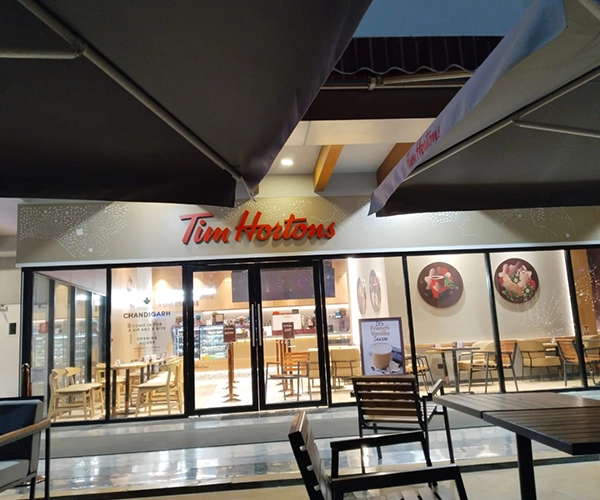Aluminium Work in Chandigarh
Aluminium Work in Chandigarh
Blog Article
Overcoming Challenges in Aluminium Fabrication
Table of Contents
- Introduction
- Understanding Aluminium Fabrication
- Common Challenges in Aluminium Fabrication
- Material Handling
- Precision Cutting
- Welding Issues
- Surface Finishing
- Corrosion and Weathering
- Techniques to Overcome Aluminium Fabrication Challenges
- Advanced Tools and Technology
- Skilled Workforce
- Surface Treatment Methods
- Quality Control Measures
- Best Practices for Successful Aluminium Fabrication
- The Role of Expertise in Aluminium Work
- Conclusion
- FAQs
Introduction
Aluminium fabrication is an essential process in various industries, from construction to automotive. However, Aluminium Work in Chandigarh faces several challenges, from material handling to precision finishing. These challenges can impact the final product’s quality and performance. To overcome these hurdles, advanced techniques, skilled craftsmanship, and modern technology are required. The best Aluminium Work in Chandigarh successfully addresses these challenges through strategic problem-solving methods and innovative practices, ensuring top-quality products for every project.
Understanding Aluminium Fabrication
Aluminium fabrication involves cutting, shaping, and assembling aluminium materials into functional parts and structures. Its lightweight, durability, and corrosion resistance make aluminium a popular choice for manufacturing in industries such as construction, automotive, and aerospace. However, working with aluminium comes with unique challenges that can affect the precision and quality of the final output.
Common Challenges in Aluminium Fabrication
1. Material Handling
Handling aluminium requires care because it can be easily scratched, dented, or warped. Improper handling may lead to defects in the final product.
2. Precision Cutting
Aluminium’s soft yet sturdy nature can make it difficult to achieve clean, precise cuts without tools that are sharp and well-calibrated.
3. Welding Issues
Welding aluminium can be tricky due to its tendency to warp when exposed to high heat. Achieving a strong, seamless weld without distortion requires expertise.
4. Surface Finishing
Achieving a smooth, uniform surface finish can be challenging due to aluminium’s reactive nature, which may lead to oxidation or discoloration.
5. Corrosion and Weathering
Aluminium is highly susceptible to corrosion when exposed to moisture and environmental elements. Proper protection and maintenance are crucial to avoid long-term damage.
Techniques to Overcome Aluminium Fabrication Challenges
1. Advanced Tools and Technology
Using cutting-edge tools such as CNC machines, laser cutters, and robotic welders ensures greater precision, efficiency, and quality in aluminium fabrication.
2. Skilled Workforce
Experienced fabricators understand the nuances of working with aluminium and can apply the best techniques to prevent common issues like warping or misalignment.
3. Surface Treatment Methods
Processes like anodizing, powder coating, and polishing protect the surface of the aluminium, improving durability, aesthetics, and resistance to corrosion.
4. Quality Control Measures
Rigorous inspection, testing, and quality control at each stage of fabrication ensure that defects are detected early and rectified promptly.
Best Practices for Successful Aluminium Fabrication
To ensure high-quality aluminium work, it is essential to follow these best practices:
- Proper storage: Store aluminium sheets in dry, temperature-controlled environments to prevent deformation.
- Careful cutting: Use the right tools to make accurate cuts without causing material stress.
- Effective welding: Preheat the aluminium to prevent warping and use high-quality welding techniques for strong joints.
- Regular cleaning: Clean and maintain tools and equipment to ensure smooth operations and prevent contamination of materials.
The Role of Expertise in Aluminium Work
The expertise of professionals plays a significant role in overcoming the challenges in aluminium fabrication. Skilled fabricators can predict and avoid potential issues, ensuring that each project is completed on time and meets the desired quality standards. Whether it’s Aluminium Work in Chandigarh or beyond, professional experience ensures that every detail is meticulously handled, delivering high-quality results.
Conclusion
Overcoming challenges in aluminium fabrication is essential for creating products that are durable, functional, and aesthetically pleasing. With the right tools, techniques, and skilled workforce, many of the common issues in aluminium fabrication can be easily addressed. Whether it’s in Aluminium Work in Chandigarh or other regions, understanding and implementing these solutions guarantees successful outcomes. Working with the Best Aluminium Work in Chandigarh ensures your project meets the highest standards of quality and durability.
FAQs
1. What is the most common challenge in aluminium fabrication?
The most common challenge is achieving precision in cutting and welding, as aluminium is a soft yet strong material.
2. How can surface finishing issues be avoided in aluminium work?
Proper cleaning, surface treatment like anodizing, and protective coatings can prevent surface issues like oxidation.
3. Is welding aluminium more challenging than other metals?
Yes, welding aluminium requires special techniques and care due to its tendency to warp and its lower melting point.
4. How can corrosion in aluminium be prevented?
Applying protective coatings such as powder coating or anodizing can prevent corrosion and extend the material's lifespan.
5. Can aluminium be recycled after fabrication?
Yes, aluminium is highly recyclable, and recycled aluminium can be used for a wide range of products, reducing environmental impact. Report this page
